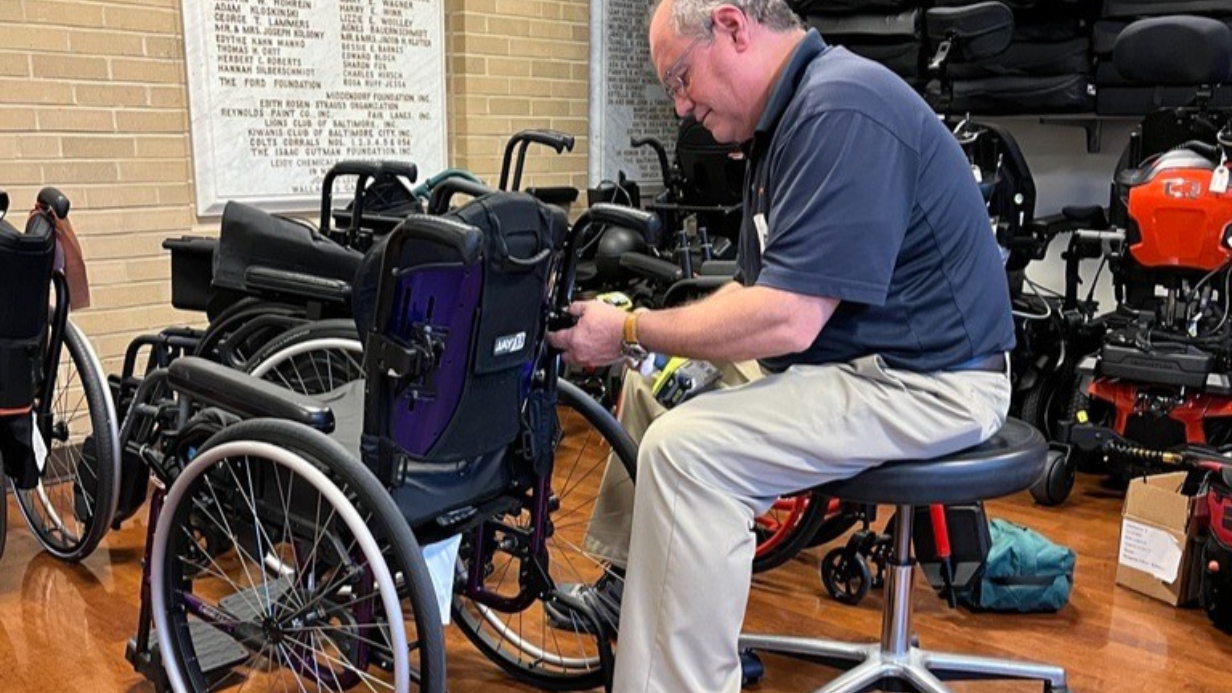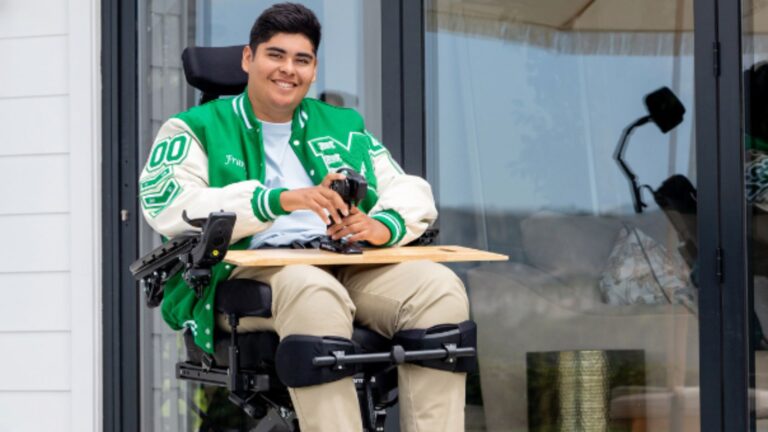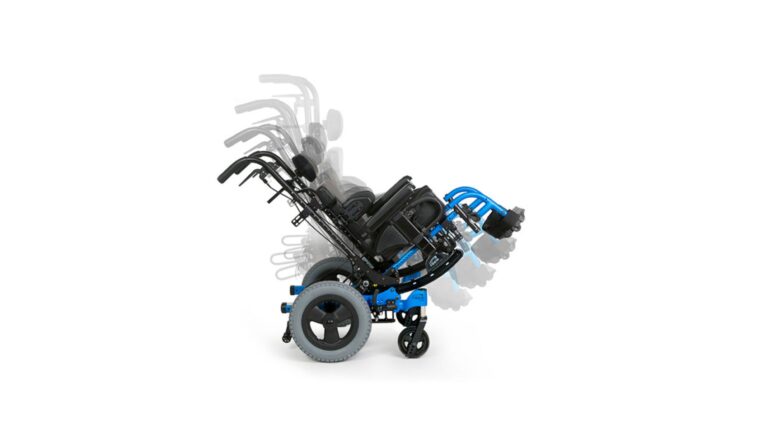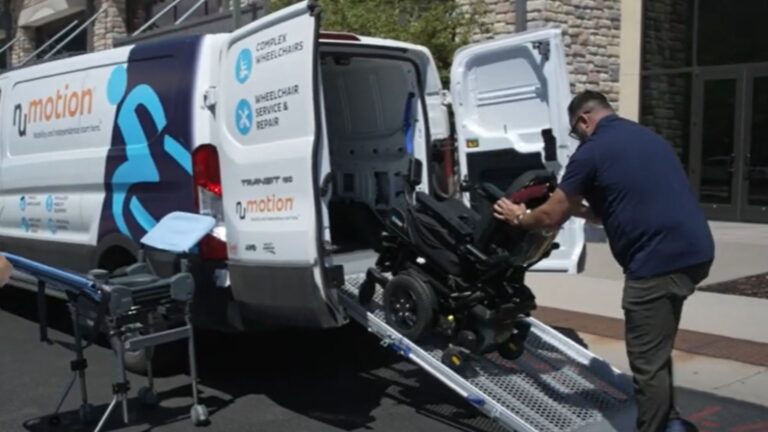The provision of Complex Rehabilitation equipment is often considered an art and a science that is best provided through the partnership, or team, of licensed medical professionals and Assistive Technology Professional (ATP) suppliers.
A united and knowledgeable team, composed of a therapist and ATP Supplier, works best for the client as each has their own roles and responsibilities. Working together, the therapist is responsible for determining the why, based on the evaluation of the client’s physical/functional skills, posture and ADL skills. The ATP Supplier is responsible for the what, which is determined by matching and configuring specific pieces of equipment to the postural and functional goals as outlined by the therapist.
Just as a therapist cannot make a diagnostic determination – that lies in the hands of the physician – an ATP Supplier cannot perform a clinical evaluation, as that is not within their scope of practice. The therapist’s treatment plan, which results from identifying the client’s goals and the findings from their evaluation, is the basis for justifying why the equipment is needed. The ATP provides the what; what components will match the treatment plan’s goals and provide the appropriate equipment to meet the client’s needs. Successful outcomes happen when the process allows each of the evaluating team to bring their training and experience to the evaluation. While each of the members must have some working knowledge of the other’s role, there is a point where one must stay within their scope of practice. These roles are not interchangeable. Each member of the team is responsible for his/her own documentation and must adhere to all payor guidelines in order to ensure the patients’ mobility needs are not delayed or negatively impacted. Failure to operate within individual scopes of practice, and failure to adhere to all payor requirements, can result in licensure and accreditation actions by oversight bodies, or even criminal or civil penalties.
How Did We Get Here?
In the late 1970’s – 80’s this industry was born of necessity created out of hard work on the part of consumers, suppliers, therapists and manufacturers. There was the intersection of the disability rights movement – people with disabilities living longer and the realization that in order to participate and be mobile, equipment was needed. Seating was individually made by hand for each client and interfaced onto heavy, chromed steel-framed chairs; little was commercially available.
During this time of handmade seating, we spent a lot of time with clients and learned a lot, but this model was time/cost intensive and had limited ability to meet the growing needs. We had to do better; people were surviving and living longer with disabilities and needed faster access to individualized equipment.
As service provision evolved, so did the formal formation of the CRT Supplier field. As Kieschnik and Wiles stated in their Nu Digest paper Application of Ethics for ATPs in CRT, this field grew up with little structure. Like all new fields, the time came when structures needed to be put in place to facilitate consistent standards toward consistent behavior. In the 1990’s, recognizing that a certification was needed, RESNA developed an Assistive Technology credential obtained by passing a credentialing exam.
Like all industries, things change over time as our understanding changes and environments dictate. There are times during which self-reflection helps us grow in the best directions. This is one of those times. The need has not changed. In fact, in some ways it is more urgent than ever However, one thing that must remain constant is the need for the clinical team – a team united and knowledgeable in their role and scope of practice.
Where to Now?
We have evolved and are continually looking for ways to get the client their equipment as soon as humanly possible.
Mike Swinford, Numotion CEO, wrote in Transforming the State of CRT from Within States, “As an industry we have an obligation to be better than we are today.” We need to employ creativity while maintaining our client’s ability to receive appropriate equipment in a timely manner. Swinford encourages us to “Look ‘upstream’ and ‘downstream’ from processes to identify points of integration outside of our normal purview to better service the customer.”
We have evolved into a huge industry, and with that comes logistical issues. One of these is is getting equipment to the client in a timely manner – no small feat. As John Pryles, Numotion Executive VP of Sales, spoke about in the Nu Digest paper The Case for Home Delivery, there are strong reasons for a paradigm shift in thinking.
The therapist and ATP supplier have obligations in this process. Kieschnik and Wiles say that there is a team involved, and the ATP supplier has a responsibility to own the outcome. When possible, and certainly for complex clients, the same team that prescribed the equipment needs to provide fitting and training. When home deliveries occur, the ATP supplier is the one who is responsible for communicating back to the team the outcome of the fitting.
Hundreds of thousands of clients are provided with successful CRT interventions a year. A well-functioning clinical team provides the best opportunities to serve the client. The client is the reason we all engage in this industry.
How Can We Partner?
- Start a conversation. The clinical team must be able to identify and discuss what’s not working and what is working.
- What are the roles of each team member throughout the evaluation and provision processes? Is it clearly communicated among the team members and to the client?
- Talk, discuss and problem solve together!
Resources:
https://www.resna.org/Portals/0/Documents/Position%20Papers/RESNAWheelchairServiceProvisionGuide.pdf

author
Anne Kieschnik, BSW, ATP, CRTS and
Susan Johnson Taylor, OTR/L
Anne Kieschnik, BSW, ATP, CRTS has worked extensively in the field of Assistive Technology providing complex rehabilitation equipment since 1979. Her experiences include working for the Muscular Dystrophy Association, the MED Group, and as an owner of a complex rehabilitation company specializing in pediatrics before joining Numotion in 2012 as ATP Development Manager. Her passion is working with children, especially the 3-year-old and younger group. Anne is a current member of the National Registry of Rehabilitation Technology Suppliers and served on the BOD from 1996-2006. She served on the NRRTS board for 10 years and has been active with The Texas Rehab Providers Council. She participated in the 1997 RESNA Certification Validation Committee, has presented to many Allied Professional organizations and speaks nationally on a variety for CRT topics on behalf of Numotion. Susan Johnson Taylor, OTR/L Susan Johnson Taylor is an occupational therapist who has been practicing in the field of seating and wheeled mobility for 40 years primarily in the Chicago area at the Rehabilitation Institute of Chicago Wheelchair and Seating Center (now the Shirley Ryan Ability Lab). Susan has published and presented nationally and internationally and has consulted on product development for a variety of manufacturers. Susan is both a member and fellow with RESNA. She is currently a member of the Resna/ANSI Wheelchair Standards Committee and the Clinician’s Task Force. She is a Certified member of the International Society of Wheelchair Professionals.



